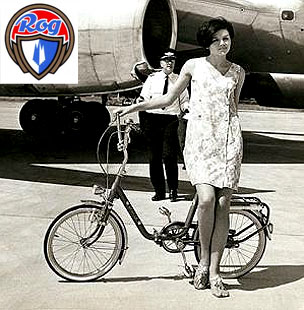(an insight on the Groningen and Dutch lifestyle, through bikes)
The first thing that hits you as you leave Groningen train station is probably going to be a bike. If the Netherlands is the country of pedal power, then Groningen is the city of cycles par excellence, and the students, making up almost a third of the city’s population, have turned saddles ‘n’ spokes into an art form. To own a brand new bike is horribly passé, and it sticks out like a sore thumb to thieves. A bike must have a bit of character.
Hastily spray painted to protect it from its previous owner. A bit of a clatter to the back wheel, a bit of a wobble to the front one. A flat tire looks good, and so does some large object precariously pinned to the pannier (a girlfriend or boyfriend or family pet). They are either piled up ten deep outside the cafés and bars in the evening or whirring by, dynamo powered lights, catching unwary pedestrians with legally required bells. Others are chained to lampposts picked clean like carcasses of their vital parts: wheels, seats, handlebars and the like. These bipedal locomotive devices are not the trim and sophisticated superfast flying machines on which Day-Glo lycra clad Chris Boardman wannabes race around the English countryside, but rather a more casual unpretentious mode of travel that is wholly representative of the Dutch way of life.
For a start, the Dutch ride bikes with a strange ungainly expertise, like Norman Wisdom walks, a sort of shaky perturbed stutter what won’t fall over. An imminent collision is always avoided by a seemingly unintentional lurch to the left or right.
These bikes are robust and strong constructions and can be bought on any street corner. They usually have no gears or brakes, which makes them simple yet ingenious in design. What is the point of elaborate gears and brakes in a country without any tiring geography? It’s a question of practicality which sits well with the pragmatic sense of humour, for the Dutch find illogical things amusing – a bike with fancy gears but no mudguards is positively hilarious!
Having no gears would also suggest that speed is not a consideration, and this is also true of Dutch life. There is a sense or organised patience to the Netherlander that seems at first infuriating and then relaxing to the visiting Briton. The Groningen cyclist does not sit hunched over braced into the wind, they sit high on their saddle like Kermit the Frog looking as if no effort was being afforded to the activity, watching life as it flies by them a little above walking pace.
This attitude is carried into the education system; it is efficient in its leisureliness. There isn’t that whiff of Victoriana which still hangs in the air of British education. The liberal attitude of the Dutch people is felt throughout the whole system. Lectures are scheduled on the hour but by unwritten agreement, they do not start until a quarter past. During exams, a tea lady trundles through with hot drinks and biscuits. To the Dutch cyclist, racing about is presumed unproductive because you do not enjoy the experience of getting to your destination.
Kerry Hagan (BA (Hons) English Literature, 2001)
(from
here)


